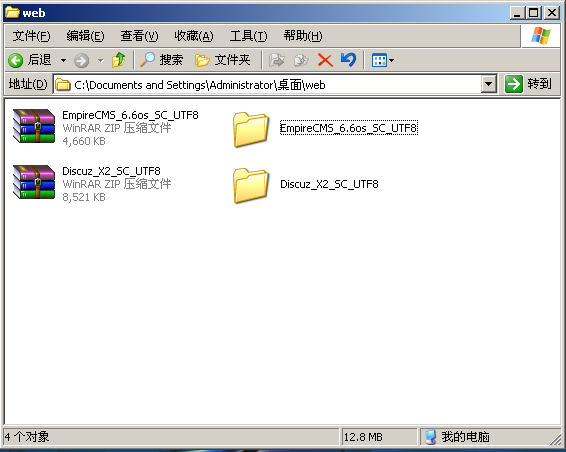曹工杂谈:花了两天时间,写了一个netty实现的http客户端,支持同步转异步和连接池(1)--核心逻辑...
背景
先说下写这个的目的,其实是好奇,dubbo是怎么实现同步转异步的,然后了解到,其依赖了请求中携带的请求id来完成这个连接复用;然后我又发现,redisson这个redis客户端,底层也是用的netty,那就比较好奇了:netty是异步的,上层是同步的,要拿结果的,同时呢,redis协议也不可能按照redisson的要求,在请求和响应里携带请求id,那,它是怎么实现同步转异步的呢,异步结果回来后,又是怎么把结果对应上的呢?
对redisson debug调试了long long time之后(你们知道的,多线程不好调试),大概理清了思路,基本就是:连接池 的思路。比如,我要访问redis:
- 我会先去连接池里拿一个连接(其实是一个netty的socketChannel),然后用这个连接,去发起请求。
- 上层新建一个promise(可写的future,熟悉completablefuture的可以秒懂,不熟悉的话,可以理解为一个阻塞队列,你去取东西,取不到,阻塞;生产者往队列放一个东西,你就不再阻塞了,且拿到了东西),把发送请求的任务交给下层的netty channel后, 将promise设置为netty channel的一个attribute ,然后在这个promise上阻塞等待
- 下层的netty channel向redis 服务器发起请求
- netty接收到redis 服务器的响应后,从channel中取到第二步设置的attribute,获取到promise,此时,相当于拿到了锁,然后打开锁,并把结果设置到promise中
- 主线程被第四步唤醒后,拿到结果并返回。
其实问题的关键是,第二步的promise传递,要设置为channel的一个attribute,不然的话,响应回来后,也不知道把响应给谁。
理清了redisson的基本思路后,我想到了很早之前,面试oppo,二面的面试官就问了我一个问题:写过类似代理的中间件没有?(因为当时面试的是中间件部门)
然后我说没有,然后基本就凉了。
其实,中间件最主要的要求,尤其是代理这种,一方面接收请求,一方面还得作为客户端去发起请求,发起请求这一步,很容易变成性能瓶颈,不少实现里,这一步都是直接使用http client这类同步请求的工具(也是支持异步的,只是同步更常见),所以我也一直想写一个netty这种异步的客户端,同时还能同步转异步的,不能同步转异步,应用场景就比较受限了。
实现思路
源码给懒得看文字的同学:
https://gitee.com/ckl111/pooled-netty-http-client.git
扯了这么多,我说下我这个http client的思路,和上面那个redisson的差不多,我这边的场景也是作为一个中间件,要访问的后端服务就几个,比如要访问http://192.168.19.102:8080下的若干服务,我这边是启动时候,就会去建一个连接池(直接配置commons pool2的池化参数,我这里配置的是,2个连接),连接池好了后,netty 的channel已经是ok的了,如下所示:

这每一个长连接,是包在我们的一个核心的数据结构里的,叫NettyClient。
核心的属性,其实主要下面两个:
//要连接的host和端口 private HostAndPortConfig config; /** * 当前使用的channel */ Channel channel;
NettyClient的初始化
构造函数
构造函数如下:
public NettyClient(HostAndPortConfig config) {
this.config = config;
}
@Data
@AllArgsConstructor
@NoArgsConstructor
public class HostAndPortConfig {
private String host;
private Integer port;
}
够简单吧,先不考虑连接池,最开始测试的时候,我就是这样,直接new对象的。
public static void main(String[] args) {
HostAndPortConfig config = new HostAndPortConfig("192.168.19.102", 8080);
NettyClient client = new NettyClient(config);
client.initConnection();
NettyHttpResponse response = client.doPost("http://192.168.19.102:8080/BOL_WebService/xxxxx.do",
JSONObject.toJSONString(new Object()));
if (response == null) {
return;
}
System.out.println(response.getBody());
}
初始化连接
上面的测试代码,new完对象后,开始初始化连接。
public void initConnection() {
log.info("initConnection starts...");
Bootstrap bootstrap;
//1.创建netty所需的bootstrap配置
bootstrap = createBootstrap(config);
//2.发起连接
ChannelFuture future = bootstrap.connect(config.getHost(), config.getPort());
log.info("current thread:{}", Thread.currentThread().getName());
//3.等待连接成功
boolean ret = future.awaitUninterruptibly(2000, MILLISECONDS);
boolean bIsSuccess = ret && future.isSuccess();
if (!bIsSuccess) {
//4.不成功抛异常
bIsConnectionOk = false;
log.error("host config:{}",config);
throw new RuntimeException("连接失败");
}
//5.走到这里,说明成功了,新的channle赋值给field
cleanOldChannelAndCancelReconnect(future, channel);
bIsConnectionOk = true;
}
这里初始化连接是直接同步等待的,如果失败,直接抛异常。第5步里,主要是把新的channel赋值给当前对象的一个field,同时,关闭旧的channle之类的。
private void cleanOldChannelAndCancelReconnect(ChannelFuture future, Channel oldChannel) {
/**
* 连接成功,关闭旧的channel,再用新的channel赋值给field
*/
try {
if (oldChannel != null) {
try {
log.info("Close old netty channel " + oldChannel);
oldChannel.close();
} catch (Exception e) {
log.error("e:{}", e);
}
}
} finally {
/**
* 新channel覆盖field
*/
NettyClient.this.channel = future.channel();
NettyClient.this.bIsConnectionOk = true;
log.info("connection is ok,new channel:{}", NettyClient.this.channel);
if (NettyClient.this.scheduledFuture != null) {
log.info("cancel scheduledFuture");
NettyClient.this.scheduledFuture.cancel(true);
}
}
}
netty client中,涉及的出站handler
这里说下前面的bootstrap的构造,如下:
private Bootstrap createBootstrap(HostAndPortConfig config) {
Bootstrap bootstrap = new Bootstrap()
.channel(NioSocketChannel.class)
.group(NIO_EVENT_LOOP_GROUP);
bootstrap.handler(new CustomChannelInitializer(bootstrap, config, this));
bootstrap.option(ChannelOption.CONNECT_TIMEOUT_MILLIS, 2000);
bootstrap.option(ChannelOption.SO_KEEPALIVE, true);
bootstrap.option(ChannelOption.TCP_NODELAY, true);
bootstrap.option(ChannelOption.ALLOCATOR, PooledByteBufAllocator.DEFAULT);
return bootstrap;
}
handler 链,主要在CustomChannelInitializer类中。
protected void initChannel(Channel ch) throws Exception {
ChannelPipeline pipeline = ch.pipeline();
// http客户端编解码器,包括了客户端http请求编码,http响应的解码
pipeline.addLast(new HttpClientCodec());
// 把多个HTTP请求中的数据组装成一个
pipeline.addLast(new HttpObjectAggregator(65536));
// 用于处理大数据流
pipeline.addLast(new ChunkedWriteHandler());
/**
* 重连handler
*/
pipeline.addLast(new ReconnectHandler(nettyClient));
/**
* 发送业务数据前,进行json编码
*/
pipeline.addLast(new HttpJsonRequestEncoder());
pipeline.addLast(new HttpResponseHandler());
}
其中,出站时(即客户端向外部write时),涉及的handler如下:
- HttpJsonRequestEncoder,把业务对象,转变为httpRequest
- HttpClientCodec,把第一步传给我们的httpRequest,编码为bytebuf,交给channel发送
简单说下HttpJsonRequestEncoder,这个是我自定义的:
/**
* http请求发送前,使用该编码器进行编码
*
* 本来是打算在这里编码body为json,感觉没必要,直接上移到工具类了
*/
public class HttpJsonRequestEncoder extends
MessageToMessageEncoder<NettyHttpRequest> {
final static String CHARSET_NAME = "UTF-8";
final static Charset UTF_8 = Charset.forName(CHARSET_NAME);
@Override
protected void encode(ChannelHandlerContext ctx, NettyHttpRequest nettyHttpRequest,
List<Object> out) {
// 1. 这个就是要最终传递出去的对象
FullHttpRequest request = null;
if (nettyHttpRequest.getHttpMethod() == HttpMethod.POST) {
ByteBuf encodeBuf = Unpooled.copiedBuffer((CharSequence) nettyHttpRequest.getBody(), UTF_8);
request = new DefaultFullHttpRequest(HttpVersion.HTTP_1_1,
HttpMethod.POST, nettyHttpRequest.getUri(), encodeBuf);
HttpUtil.setContentLength(request, encodeBuf.readableBytes());
} else if (nettyHttpRequest.getHttpMethod() == HttpMethod.GET) {
request = new DefaultFullHttpRequest(HttpVersion.HTTP_1_1,
HttpMethod.GET, nettyHttpRequest.getUri());
} else {
throw new RuntimeException();
}
//2. 填充header
populateHeaders(ctx, request);
out.add(request);
}
private void populateHeaders(ChannelHandlerContext ctx, FullHttpRequest request) {
/**
* headers 设置
*/
HttpHeaders headers = request.headers();
headers.set(HttpHeaderNames.HOST, ctx.channel().remoteAddress().toString().substring(1));
headers.set(HttpHeaderNames.CONNECTION, HttpHeaderValues.KEEP_ALIVE);
headers.set(HttpHeaderNames.CONTENT_TYPE,
"application/json");
/**
* 设置我方可以接收的
*/
headers.set(HttpHeaderNames.ACCEPT_ENCODING,
HttpHeaderValues.GZIP.toString() + ','
+ HttpHeaderValues.DEFLATE.toString());
headers.set(HttpHeaderNames.ACCEPT_CHARSET,
"utf-8,ISO-8859-1;q=0.7,*;q=0.7");
headers.set(HttpHeaderNames.ACCEPT_LANGUAGE, "zh-CN,zh;q=0.9,en-US;q=0.8,en;q=0.7");
headers.set(HttpHeaderNames.ACCEPT, "*/*");
/**
* 设置agent
*/
headers.set(HttpHeaderNames.USER_AGENT,
"Netty xml Http Client side");
}
}
netty client涉及的入站handler
- HttpClientCodec和HttpObjectAggregator,主要是将bytebuf,转变为io.netty.handler.codec.http.FullHttpResponse 类型的对象
- HttpResponseHandler,我们的业务handler
/**
* http请求响应的处理器
*/
@Slf4j
public class HttpResponseHandler extends SimpleChannelInboundHandler<FullHttpResponse> {
@Override
protected void channelRead0(ChannelHandlerContext ctx, FullHttpResponse fullHttpResponse) throws Exception {
String s = fullHttpResponse.content().toString(CharsetUtil.UTF_8);
NettyHttpResponse nettyHttpResponse = NettyHttpResponse.successResponse(s);
// 1.
NettyHttpRequestContext nettyHttpRequestContext = (NettyHttpRequestContext) ctx.channel().attr(NettyClient.CURRENT_REQ_BOUND_WITH_THE_CHANNEL).get();
log.info("req url:{},params:{},resp:{}",
nettyHttpRequestContext.getNettyHttpRequest().getFullUrl(),
nettyHttpRequestContext.getNettyHttpRequest().getBody(),
nettyHttpResponse);
// 2.
Promise<NettyHttpResponse> promise = nettyHttpRequestContext.getDefaultPromise();
promise.setSuccess(nettyHttpResponse);
}
}
- 1处代码,主要从channel中,根据key,获取当前的请求相关信息
- 2处代码,从当前请求中,拿到promise,设置结果,此时,会唤醒主线程。
netty client 发起http post调用
说完了netty client,我们再说说调用的过程:
public NettyHttpResponse doPost(String url, Object body) {
NettyHttpRequest request = new NettyHttpRequest(url, body);
return doHttpRequest(request);
}
private static final DefaultEventLoop NETTY_RESPONSE_PROMISE_NOTIFY_EVENT_LOOP = new DefaultEventLoop(null, new NamedThreadFactory("NettyResponsePromiseNotify"));
private NettyHttpResponse doHttpRequest(NettyHttpRequest request) {
// 1
Promise<NettyHttpResponse> defaultPromise = NETTY_RESPONSE_PROMISE_NOTIFY_EVENT_LOOP.newPromise();
// 2
NettyHttpRequestContext context = new NettyHttpRequestContext(request, defaultPromise);
channel.attr(CURRENT_REQ_BOUND_WITH_THE_CHANNEL).set(context);
// 3
ChannelFuture channelFuture = channel.writeAndFlush(request);
channelFuture.addListener(new GenericFutureListener<Future<? super Void>>() {
@Override
public void operationComplete(Future<? super Void> future) throws Exception {
System.out.println(Thread.currentThread().getName() + " 请求发送完成");
}
});
// 4
return get(defaultPromise);
}
上面我已经标注了几个数字,分别讲一下:
- 新建一个promise,可以理解为一把可以我们手动完成的锁(一般主线程在这个锁上等待,在另一个线程去完成)
- 把锁和其他请求信息,一起放到channle里
- 使用channle发送数据
- 同步等待
第四步等待的get方法如下:
public <V> V get(Promise<V> future) {
// 1.
if (!future.isDone()) {
CountDownLatch l = new CountDownLatch(1);
future.addListener(new GenericFutureListener<Future<? super V>>() {
@Override
public void operationComplete(Future<? super V> future) throws Exception {
log.info("received response,listener is invoked");
if (future.isDone()) {
// 2
// promise的线程池,会回调该listener
l.countDown();
}
}
});
boolean interrupted = false;
if (!future.isDone()) {
try {
// 3
l.await(4, TimeUnit.SECONDS);
} catch (InterruptedException e) {
log.error("e:{}", e);
interrupted = true;
}
}
if (interrupted) {
Thread.currentThread().interrupt();
}
}
//4
if (future.isSuccess()) {
return future.getNow();
}
log.error("wait result time out ");
return null;
}
- 如果promise的状态还是没有完成,则我们new了一个闭锁
- 加了一个listner在promise上面,别人操作这个promise,这个listener会被回调,回调逻辑:将闭锁打开
- 主线程,在闭锁上等待
- 主线程,走到这里,说明已经等待超时,或者已经完成,可以获取结果并返回
什么地方会修改promise
前面我们提到了,在response的handler中:
/**
* http请求响应的处理器
*/
@Slf4j
public class HttpResponseHandler extends SimpleChannelInboundHandler<FullHttpResponse> {
@Override
protected void channelRead0(ChannelHandlerContext ctx, FullHttpResponse fullHttpResponse) throws Exception {
String s = fullHttpResponse.content().toString(CharsetUtil.UTF_8);
NettyHttpResponse nettyHttpResponse = NettyHttpResponse.successResponse(s);
// 1.
NettyHttpRequestContext nettyHttpRequestContext = (NettyHttpRequestContext) ctx.channel().attr(NettyClient.CURRENT_REQ_BOUND_WITH_THE_CHANNEL).get();
log.info("req url:{},params:{},resp:{}",
nettyHttpRequestContext.getNettyHttpRequest().getFullUrl(),
nettyHttpRequestContext.getNettyHttpRequest().getBody(),
nettyHttpResponse);
// 2.
Promise<NettyHttpResponse> promise = nettyHttpRequestContext.getDefaultPromise();
promise.setSuccess(nettyHttpResponse);
}
}
其中,2处,修改promise,此时就会回调前面说的那个listenr,打开闭锁,主线程也因此得以继续执行:
public <V> V get(Promise<V> future) {
if (!future.isDone()) {
CountDownLatch l = new CountDownLatch(1);
future.addListener(new GenericFutureListener<Future<? super V>>() {
@Override
public void operationComplete(Future<? super V> future) throws Exception {
log.info("received response,listener is invoked");
if (future.isDone()) {
// io线程会回调该listener
l.countDown();
}
}
});
.....
}
总结
本篇的大致思路差不多就是这样了,主要逻辑在于同步转异步那一块。
还有些没讲到的,后面再讲,大概还有2个部分。
- 断线重连
- commons pool实现连接池。
代码我放在:
https://gitee.com/ckl111/pooled-netty-http-client.git
- 本文标签: IDE NIO App tag 服务器 final ip 配置 IOS 多线程 id key tab Connection js redis Service CTO Agent web 锁 db cat http Netty 长连接 XML 源码 同步 https 数据 处理器 TCP CountDownLatch zip 参数 node 线程 DDL 大数据 WebService json 测试 dubbo git 调试 message 时间 连接池 list remote tar src Bootstrap IO HTML 协议 总结 struct UI 线程池 代码 bug value 端口 client
- 版权声明: 本文为互联网转载文章,出处已在文章中说明(部分除外)。如果侵权,请联系本站长删除,谢谢。
- 本文海报: 生成海报一 生成海报二











![[HBLOG]公众号](https://www.liuhaihua.cn/img/qrcode_gzh.jpg)

